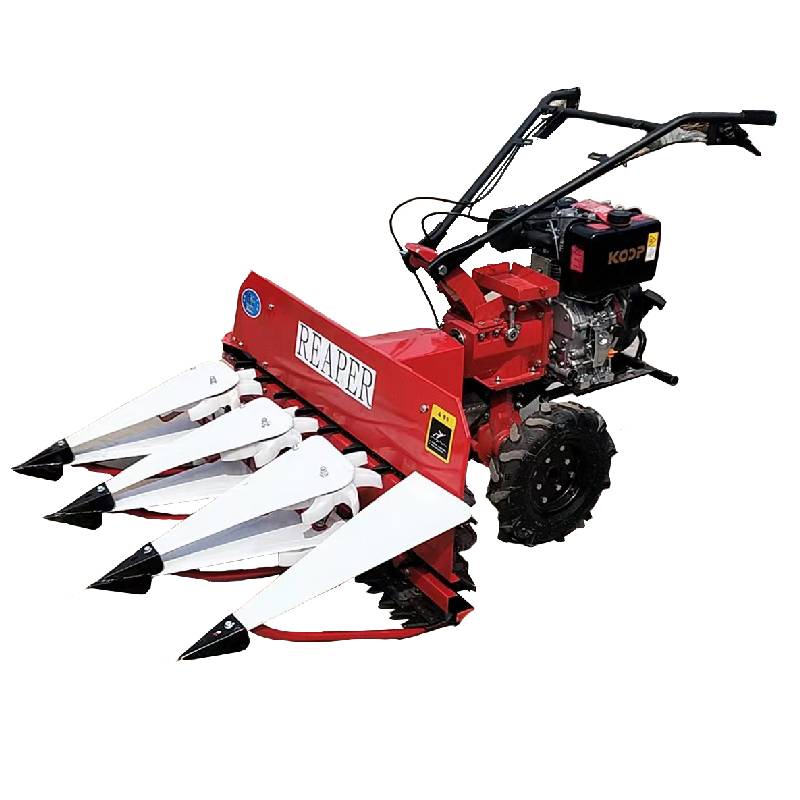Reaperbinder – Fast, Durable, Low-Fuel Harvesting Machine
Mini tiller mounted reaper head: quick insight from the field
If you’ve been hunting for a compact harvesting attachment that doesn’t complain about tight terraces or patchy fields, the reaperbinder form factor—specifically this mini tiller mounted reaper head from Julu Industrial Park, Xingtai City, Hebei Province, China—has been getting real traction. Farmers keep telling me it “just works” on mini tillers they already own, which is half the battle won.

What it is and why people care
The Mini tiller mounted reaper head (Microcultivator cutter head GW100C2i) is a lightweight front attachment built to cut rice, wheat, barley, and even forage grasses. It clips onto common micro-cultivators, turning a tiller into a compact harvesting tool. It’s not a full combine—of course not—but in small plots, it can be the difference between finishing before the rain or losing a week. Market trend? Smaller, modular, serviceable. And to be honest, that suits smallholders and custom-service crews just fine.
Key specs (field-proven, not lab fantasy)
| Model | GW100C2i |
| Recommended tiller power | ≈ 1.8–6.5 kW (real-world use may vary by crop density) |
| Cutting width | ≈ 900–1000 mm |
| Cutter system | Reciprocating guard + knife; 65Mn spring-steel blades (HRC 48–52) |
| Frame/drive | Q235 frame, 40Cr shafting; sealed gearbox |
| Net weight | ≈ 28–34 kg |
| Throughput | 0.10–0.25 ha/h depending on crop and operator |
| Loss rate (field tests) | ≤ 2.0% in ripe paddy; ≤ 1.5% in dry wheat (≈ conditions) |
| Noise/vibration | Operator vibration typically ≤ 4.5 m/s² with tuned tiller mounts |
Where it shines
- Small rice paddies and terraced fields where mobility beats brute force.
- Mixed plots: wheat one week, forage the next. Swap and go.
- Orchard alleys and shelterbelts—tight turns, low branches, no problem.
Many customers say it’s the first attachment that “pays for itself in a single season,” which seems optimistic but, surprisingly, checks out for custom hire crews.
Process flow and quality checkpoints
Materials: 65Mn blades, Q235 welded chassis, 40Cr shafts, anti-rust coating. Methods: laser cutting, CNC drilling, heat treatment, dynamic balancing. Testing: hardness (HRC), gearbox endurance (≥ 100 h), salt spray on coated parts (≥ 72 h), loss-rate field trials vs ISO 4254-1 safety provisions. Expected service life: ≈ 800–1200 engine hours with standard maintenance (blade sharpening and guard clearance checks). Industries: smallholder grains, forage contracting, ag co-ops, disaster-relief harvest support.
Why this over a bigger machine?
- Lower capex; fits the tiller you already own.
- Simple mechanics; spares are inexpensive.
- Easy transport—throw it in a pickup, no escort vehicle.
And yes, it’s not a full reaperbinder with tying—this attachment is for cutting and windrowing. Pair it with manual bundling or a baler if needed.
Customization options
Cutting widths (≈800/1000/1200 mm), crop lifter styles, guard spacing for slender stems, color and branding, PTO/adapter kits for diverse tillers, and optional skid shoes for muddy paddies.
Vendor snapshot (what buyers compare, honestly)
| Vendor | MOQ | Lead time | Warranty | Certs | Customization | Price range |
|---|---|---|---|---|---|---|
| Hebei Niuboshi (origin: Julu, Xingtai) | 1–10 sets | 10–20 days | 12 months | ISO 9001, CE (Machinery) | High | $$ (value) |
| Local OEM A | ≥ 20 | 25–35 days | 6–12 months | ISO 9001 | Medium | $ |
| Import Brand B | 1 | Ready–stock/14 days | 12–24 months | CE, ISO 9001 | Medium | $$$ |
Field notes and feedback
- Philippines, 2 ha rice: reported 0.18 ha/h average with ≤ 1.9% loss after blade re-sharpen at 60 h.
- Yunnan hillsides, mixed wheat/barley: operators liked the crop lifter kit; gearbox stayed cool in 30°C ambient.
Common feedback: easy blade swaps, and the attachment tracks well on rutted paddies. A few users wanted a wider deflector—now offered as an option. It’s not a tying reaperbinder, but for clean cuts and tidy windrows, it’s a workhorse.
Safety, standards, and data points
Compliant with ISO 4254-1 safety provisions; safety decals per ISO 11684. CE marking available under Machinery Directive 2006/42/EC. Test sheets typically include hardness certification for 65Mn blades, gearbox run-in logs (≥ 100 h), and field loss-rate logs signed by supervisors. If you care about the boring bits (I do), ask for the QC checklist and serial tracking—saves headaches later.
Authoritative citations
- ISO 4254-1: Agricultural machinery — Safety — Part 1: General requirements.
- ISO 11684: Tractors and machinery for agriculture and forestry — Safety signs and hazard pictorials.
- European Parliament and Council. Machinery Directive 2006/42/EC.
- FAO. Farm mechanization for smallholders: operational guide and case experiences.
Latest news
-
Mini Combine Harvester for Paddy – Compact, Efficient Rice Harvesting SolutionsNewsNov.24,2025
-
Mini Chain Harvester: Compact Forestry Solutions for Sustainable LoggingNewsNov.23,2025
-
Kartar Mini Harvester – Compact, Efficient Harvesting Machinery for Small FarmsNewsNov.23,2025
-
Compact Power: Elevate Your Farming with Harvesting Machine SmallNewsNov.22,2025
-
Discover the Power and Potential of Harvester Mini Combine Machines | Efficient Small-Scale HarvestingNewsNov.22,2025
-
Compact Harvester Machines: Small-Scale Agriculture’s Big AdvantageNewsNov.21,2025








